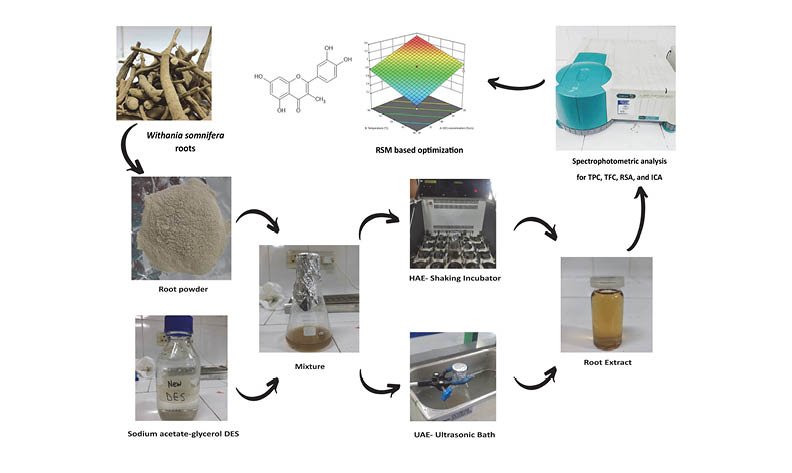Comparison of deep eutectic solvent-based ultrasound- and heat-assisted extraction of bioactive compounds from Withania somnifera and process optimization using response surface methodology
DOI:
https://doi.org/10.17344/acsi.2023.8419Abstract
Extraction of bioactive compounds from Withania somnifera roots was studied using sodium acetate-glycerol deep eutectic solvent (DES) and two techniques ultrasound-assisted extraction (UAE) and heat-assisted extraction (HAE) under response surface methodology (RSM). For UAE and HAE, total phenolic content (TPC, mg gallic acid equivalents per g dry weight (mg GAE g-1 DW)), total flavonoid content (TFC, mg rutin equivalents g-1 DW (mg RE g-1 DW)), radical scavenging activity (RSA, mg AAE (ascorbic acid equivalents) g-1 DW), and iron chelating activity (ICA, mg EDTAE (ethylenediaminetetraacetate equivalents) g-1 DW%) were 6.51, 6.08, 12.56, and 3.57, respectively, and 3.33, 3.98. 6.57 and 2.48, respectively. For UAE, the optimal conditions were a DES concentration of 50 %, temperature of 60 °C, and time of 20 min, and for HAE, a DES concentration of 60 %, temperature of 60 °C, and time of 75 min. The discovered models were strongly supported by the validation experiments. UAE was more efficient and less time-consuming for extracting phytoconstituents of the W. somnifera than HAE.

Downloads
Published
Issue
Section
License
Copyright (c) 1970 Faizan Sohail, Dildar Ahmed

This work is licensed under a Creative Commons Attribution 4.0 International License.
Except where otherwise noted, articles in this journal are published under the Creative Commons Attribution 4.0 International License
